Jasmine plants have an exotic appeal with starry white flowers and shiny leaves. Plants can be grown outside or indoors and are pretty easy to grow. However, Jasmine plants have problems and must be able to identify them. Disease in Jasmine plants is easily recognized, is usually the result of cultural problems, and is easily corrected.
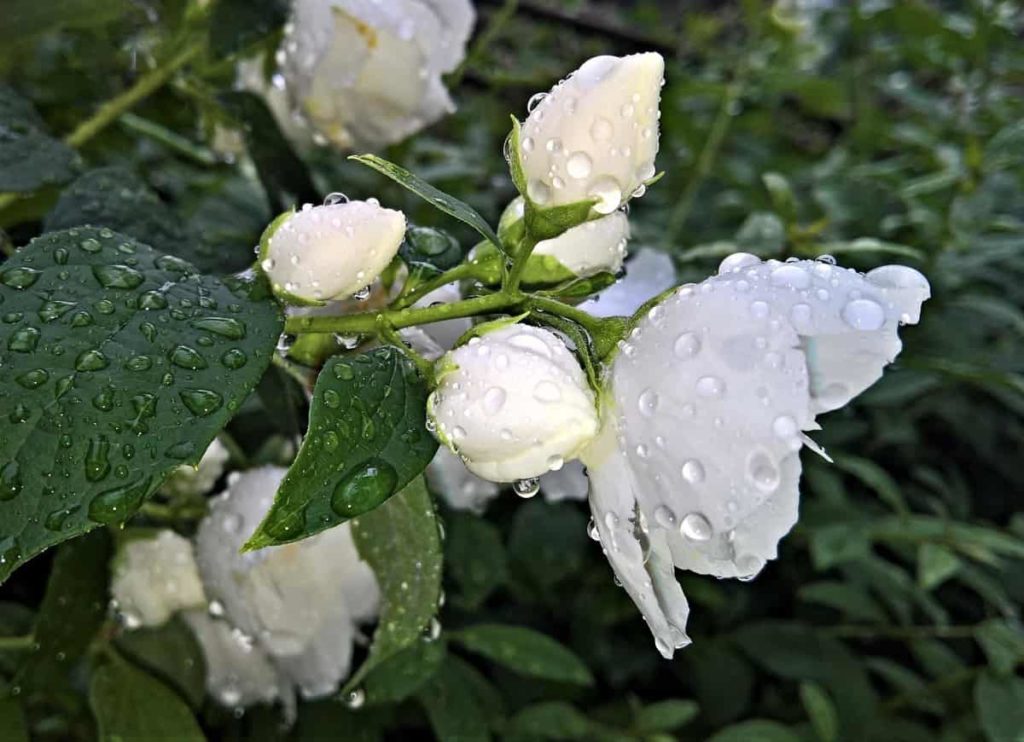
Although Jasmine is less affected by pests and diseases, there are times when neighboring plants or soils can attract pests and diseases to Jasmine. Most pests affect Jasmine during dry times, while diseases that are fungal attacks occur during moist periods. Let’s check out common Jasmine plant problems below.
Common Jasmine plant problems
Leaves fall off from the Jasmine plant
If your Jasmine gets too little water, the roots cannot pass through the soil and collect nutrients. This can dry the leaves and fall. If you leave a puddle of water under the planter, roots can be prone to root rot. Cold weather can cause leaf drops if your Jasmine is planted outside. It is completely natural for many Jasmine plants in the fall.
The difference in this example is that the leaves will turn yellow before falling, just as the tree leaves change color. Lack of light could be another reason for Jasmine plants losing their leaves. If you’ve moved your pot plant from the outdoor deck indoors for winter, it’s probably getting much less light than before. This will cause the leaves to shed.
Solution – If your soil is too dry, water it more often or attach an automatic water device to the planter. If you recently moved your Jasmine plant indoors, place it under fluorescent light for 16 hours a day, or move the planter to where it will get bright sunlight for most of the day.
For overwatered Jasmine, remove the root ball from the planter and wash all the soil. Suppose some roots are black, soft, or mushy, and the root of the plant rots. Clip all the damaged roots and repot the plant with fresh potting soil.
Jasmine plant leaves turn yellow
Pests
Pests can be culprits if your Jasmine has yellow leaves.
Solution – If you see any pests in your Jasmine plants, use insecticidal soap or horticultural oil.
Nutrient problems – Jasmine plants suffer from chlorosis, a condition when the plant lacks nutrients iron. However, zinc and manganese deficiency can also cause chlorosis, which starts with stunted growth and pale green or yellow leaves, depending on the severity of the deficiency.
Solution – A foliar spray of chelated nutrients can improve the condition, perhaps only temporarily. Soil testing is the only definite way to determine soil deficiency that can be responsible if the Jasmine leaves are yellow.
In case you missed it: Growing Jasmine In Balcony – Planting Guide For Pots
Inappropriate water
yellow leaves on Jasmine plants are caused by too much and too little water.
Solution – Jasmine performs best in rich, organic, well-drained soil, so you should water the soil when dry.
pH problems
If your soil is extremely alkaline, this imbalance can cause yellow leaves.
Solution – Applying sulfur or adding woody organic matter can help balance pH, but do check your soil before trying to make corrections.
Jasmine flowers are turning brown
Inappropriate water
Pouring more water or underwater water into the Jasmine plant can make leaves and flowers brown, produce spots, or fall.
Solution – If your plant needs a little extra water, make a small berm (a small ridge) in the form of a donut around the plant, which is 2 to 3 inches high. This berm helps in trapping rainwater and lets it slowly seething into the ground. If your Jasmine is in a pot, it may need to be watered more often. The terracotta pots can drain water so that you can dip the pot in a bucket of water for 20 minutes every two to three weeks.
Sunlight and stress
If it’s indoors, Jasmine needs at least four hours of sunshine daily or 14 to 16 hours of strong artificial light. When the plant receives a lot of sunshine and heat, it can burn the sunburn and heat. If the whole plant is wilting or getting brown, it can be prone to heat scorch. Like people, Jasmine plants are also stressed. This could result from a transplant shock or another setback to the plant system. Leaves can be yellow, and flowers can be brown when that happens.
Solution – You can shade the rest of the plant until the weather reduces its heat. Your plant will return to normal health if you continue to water it properly and ensure it gets good sunlight within a few weeks.
Jasmine plant flowers falling
Nitrogen excess in the soil
One of the common causes of flowering problems on the Jasmine is the excessive nitrogen content of the soil.
Solution – The only way to fix this situation is to ensure flowers next season, diluting excess nitrogen by adding sawdust and fine wooden sticks as a mulch on the bed’s soil. This will reduce nitrogen to a more normal level in the soil. Another good way to recover your Jasmine plant from this excess of nitrogen is to pour pure water on your plant soil to flush this agent and thus correct the soil nitrogen level and modify the pH level.
Extreme temperature changes and lack of pollination
Jasmine plants are tropical and thrive in temperatures between 21 to 29°C. Extreme and sudden changes in temperature cause massive problems in the fitness of the Jasmine plant and make it annoying for them to keep their flowers healthy.
Solution – Flowers may die and fall after a few days if flowers are not pollinated. If you’re expecting these extreme changes in the weather, you can do something to help the pollination process by gently rubbing the flowers on top, mimicking what the wind will do. You can slightly rub the anthers and stigma with a fine paintbrush going from flower to flower to redistribute this pollen.
In case you missed it: Homemade Fertilizers For Jasmine – Organic/Natural
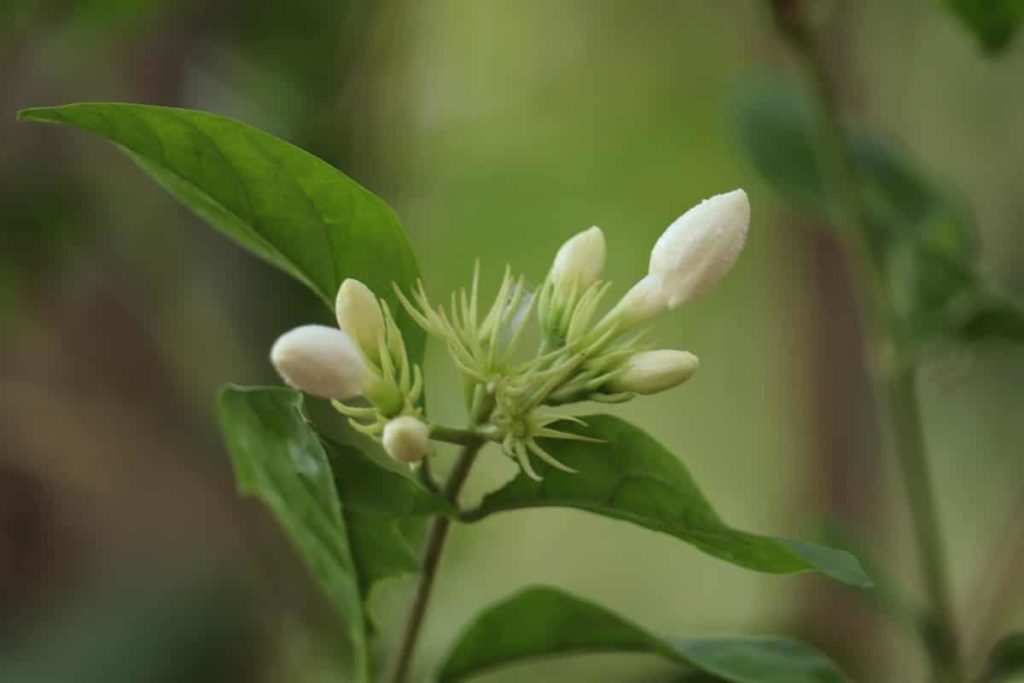
Sunlight and soil moisture
The daily sunlight needs of Jasmine plants are a part shadow from the full sun, approximately 6 hours or more direct sun exposure, and around 2 hours of partial shade. During the extreme rise in temperature, Jasmine plants can suffer from heat shocks indoors and outdoors in the home.
Solution – Moreover, if this happens, most of your flowers can fall, and the rest of the Jasmine plant may also be at risk. Building a better drainage hole near the plant is highly recommended to help with root flooding. If this new drainage doesn’t improve the situation, you may need to replant your Jasmine, so it has time to dry up and get a new location with new soil.
Finally, although soil moisture is important, it is equally important to ensure that soil conditions are also excellent and that no nutrients like phosphorus and potassium have been lost, as otherwise, flowers will fall. Regularly fertilize without causing overfertilization.
Thrips attack
You will start seeing the damage of the thrips in the form of scratch marks on the surfaces of flower petals. Flowers can fall from the plant only in a few days. Finally, thrips may not damage the flower so badly in every case, but they do eat the pollen sediment of the flower, thus reducing the longevity of Jasmine flowers.
Solution – You can use insecticidal soap and neem oil to reduce thrips infection.
Curling Jasmine plant leaves
Lack of light
Jasmine plant is a light lover. If there is too much shade on Jasmine for too long during the day, it will not find the exact amount of light and temperature it needs to work properly.
Solution – Move your plant to where it can get about 4 to 6 hours of direct sunlight daily, without exposing it much because leaves might otherwise burn. Your plant should now be able to process its desired photosynthesis and recover within a few weeks.
Excess of light
Too many hours under the extreme sun, excessive photosynthesis process, and Jasmine can cause heat shock in the plant, causing its leaves to burn, curl, and turn brown.
Solution – You can fix this problem by moving your Jasmine pot plant where the light ratio is part shadow. You relax your plant a little and never reach excess in light and heat conditions by limiting direct lighting times.
Nutrient deficiency
Nitrogen deficiency- If your Jasmine plant is showing some curly leaves, maybe it is a sign of your plant not getting enough nitrogen.
Solution – You can also use fertilizer and soil mix with amino acid supplements regularly to prevent these nitrogen deficiencies from progressing. Thus, these promote protein production to help grow and maintain leaves.
Lack of phosphorus – If your Jasmine is deficient in phosphorus, the leaves at the bottom of the plant will appear in a dark green shade and gradually start turning to brown and later curl downwards as this deficiency becomes more pronounced.
In case you missed it: Jasmine Gardening For Beginners – How to Start, FAQs
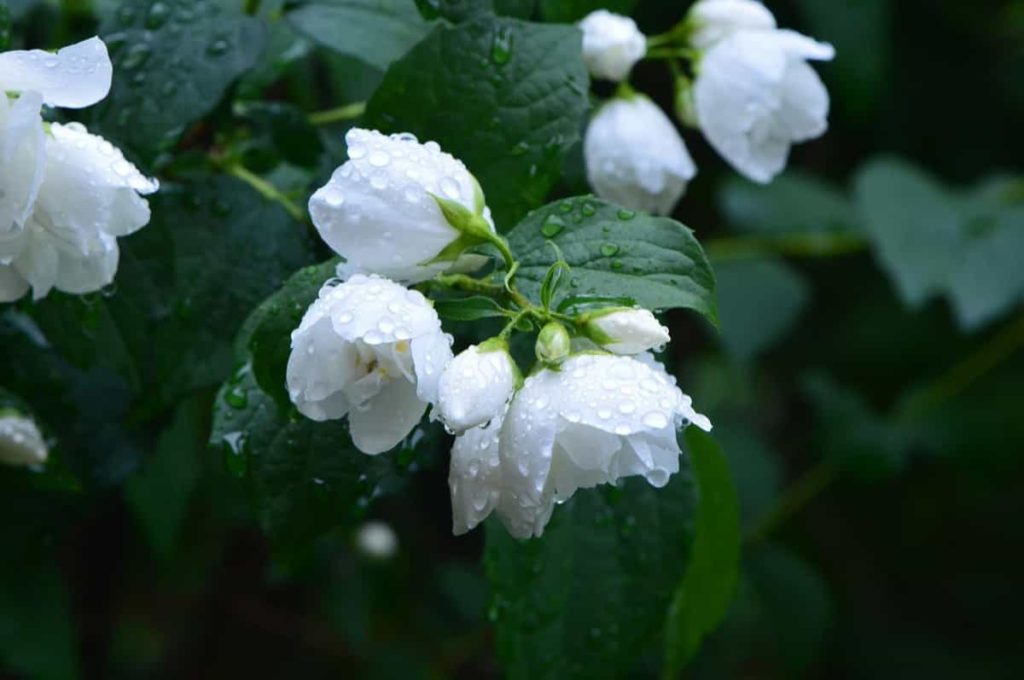
Solution – You can use fertilizer once a week until those leaves start improving your wrinkled appearance and use only once every two to three months since. Remember, heat shocks are a common problem and can compromise the integrity of your Jasmine plant, but too cold times can have the same effect and hinder your Jasmine plants’ ability to take the much-needed phosphorus.
Calcium deficiency – The most common result of calcium deficiency in the Jasmine plant is slow growth, leading to regular curling leaves. If you allow such deficiencies to last longer, Jasmine plants will be in danger of being stunted and weakened.
Solution – You can use fertilizer to improve the calcium levels in the soil.
Potassium deficiency – The first signs, which help us identify potassium deficiency, make Jasmine plant leaves look somewhat unhealthy: like leaf tips with crispy, curly, and yellow leaves looking like they’ve burned.
Solution – The best way to overcome potassium deficiency and ensure potassium in soil is to use 20-20-20 fertilizers and add additional supplements. Make sure the pH is not too acidic.
Lack of manganese and magnesium – Manganese is a micronutrient involved in the plant’s growth and development and metabolic functions. Magnesium is also a critical component of photosynthesis machinery: it is the central part of the chlorophyll molecule in a plant. Without magnesium, there is no photosynthesis.
Solution – You will need to check the soil to solve these problems. Too much alkaline soil can cause problems absorbing these micronutrients through root systems. If your pH is alkaline, you must make soil acid by adding alum or vinegar solutions. A foliar spray with an Epsom salt solution can increase the amount of soil magnesium and balance the pH.
Overwater or lack of water – Proper watering of the Jasmine plant is essential for its long-term well-being and survival. However, sometimes we can make irrigation mistakes and give more water to plants. Or perhaps, it’s a heavy wet season this year, and our plant is getting drenched. When overwatered, this can lead to rotten roots, which can cause nutrition and water use problems, causing curled leaves.
Solution – Using fungicides can help with fungal problems arising in root rot conditions and will likely accelerate the recovery of your plant. On the contrary, the huge water shortage is equally harmful to the overall health of the Jasmine plant. You should regularly water your plant until the water comes out of the drainage hole under the pot.
Pests
Another common cause of leaf curl in Jasmine plants is a pest attack. Generally, aphids, whitefly, and mealybugs suck plant juice through leaves and thus really contribute to the overall deficiency of the plant.
Solution – As a general principle, neem oil is an excellent first approach to improving this problem. If a load of these insects is too high, the leaves will look very destroyed, and you will probably have to cut them.
Jasmine plants dying
Feel the soil level under the Jasmine plant to see if it’s soggy. If so, the plant may be prone to more water.
Solution – If the Jasmine is put in the pot, put it back in fresh soil. If Jasmine is in the ground, stop watering it until the top 4 or 5 inches of soil dries up to touch.
Jasmine plants are also damaged by frost, which hits back vines but not roots.
Solution – Cover the Jasmine with a blanket if the symptoms occur after frost. Leave the frost blanket until the cold temperature is low. The plant will regrow in spring.
In case you missed it: How to Grow Jasmine Flowers at Home in the USA: From Seeds, Cuttings, Faster, In Backyards, Indoors, and In Containers
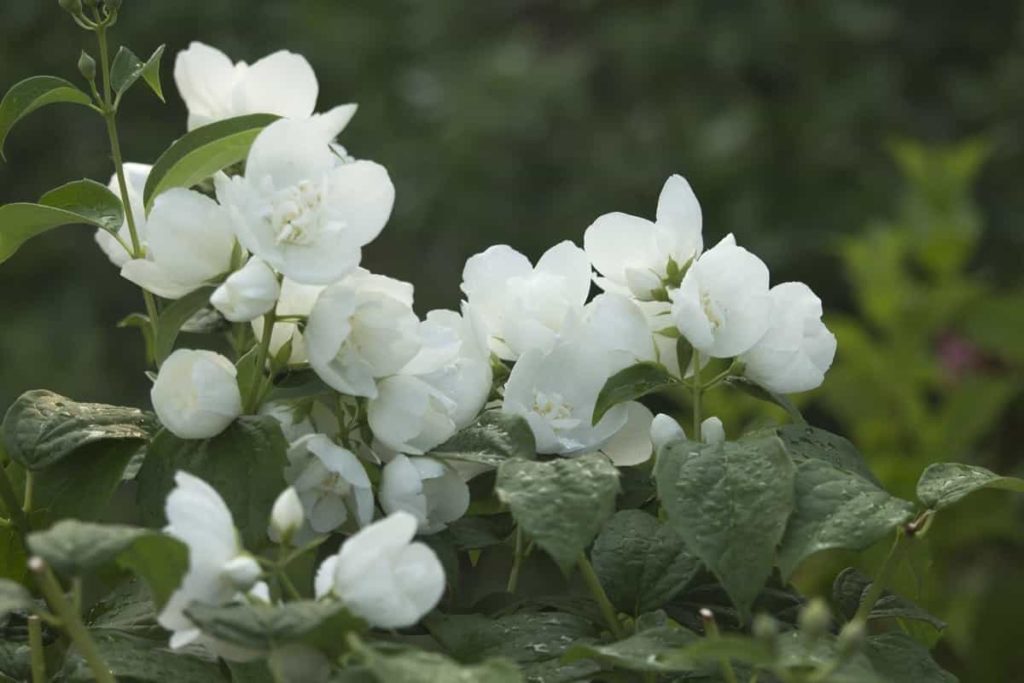
Look closely at the vine leaves. If they are yellow and green veins run through them, it indicates iron deficiency.
Solution – Remedy this by applying fertilizer containing chelated iron at the rate of 85 to 150 grams per 100 square feet of soil.
Closely examine the plant for a spider web or black mold, indicating the presence of spider mites or aphids.
Solution – If you look at any of them, spray insecticidal soap on the whole Jasmine plant to kill the pests.
Jasmine plant is not blooming
Soil and moisture requirements
Jasmine should have a well-drained soil space for proper flowers. If the roots remain compacted and in soggy soil, they cannot absorb the nutrients and moisture needed for possible flowers. As a result, your vine or bush remains colorful green without any flower growth.
Solution – Add organic matter to your garden to improve soil structure from compact or sandy conditions. In contrast, using the potting mix for containers Jasmine doesn’t pack garden soil into containers as it doesn’t drain effectively in a limited space.
Minimum light level
Jasmine needs at least four hours of sunlight to bloom properly. For indoor container Jasmines, you should light the plant with artificial light for at least 14 hours or keep it near the window for bright, indirect sunlight.
Solution – Jasmine leaves must be constantly photosynthesized to produce fabulous flowers and powerful fragrances. As the days get shorter in autumn, maintain the same amount of sunlight, but let Jasmine be exposed to cool temperatures to stimulate flower growth for the next season.
Humidity level
Dry air conditions negatively affect your ability to be Jasmine flowers; many species are native to semitropical areas.
Solution – Place the gravel in a tray and fill it with water to increase moisture around the pot plants.
Pruning
Due to their extensive growth, you should prune the Jasmine after the flower is finished. If you cut the trunks directly before flowering, your Jasmine doesn’t have the buds necessary for flower growth; you cut your flower buds effectively for the season, leaving only leaves behind.
Solution – Depending on different types, prune your Jasmine at the end of summer or spring; observe it to confirm the duration of your plant’s normal flowers before removing any stems.
Pests
Spider mites
Mites damage plant leaves by feeding juice inside plant leaves.
Solution – To get rid of spider mites, cut the plant to the ground after it opens, remove infected trimmings and fertilize the plant’s base to help it grow. You can also spray plant leaves with a water jet to wash or kill any mites or use a miticide.
In case you missed it: Growth Stages of Flowering Plants: Rose, Marigold, Hibiscus, Dahlia, Gerbera Daisy, and Jasmine
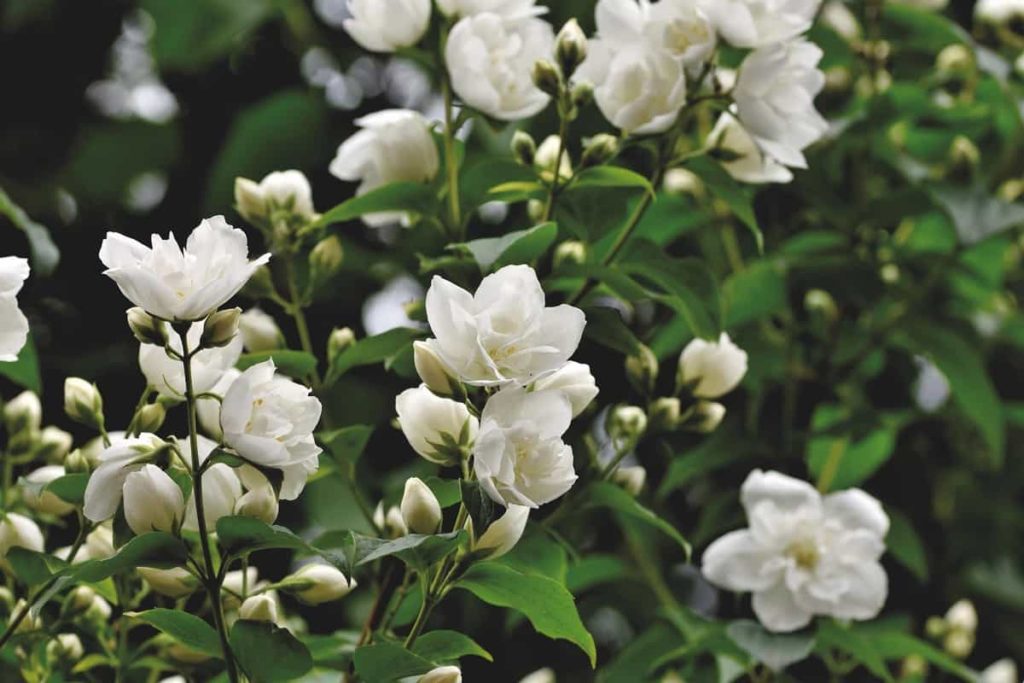
Mealybugs
Mealybugs make white mass on plant leaves that look like cotton or waxy growth.
Solution – Like mites, when gardeners spray them with a water stream, the mealybugs often fall off the Jasmine leaves. You can use insecticidal soap or narrow range oil to eliminate the mealybug attack.
Scales
Black scales sometimes influence Jasmine plants. Jasmine plants with scales often produce colorless, distorted, dead, and fallen leaves. Although a few scales will not cause severe damage to a plant, a massive attack can cause severe damage or death to a plant.
Solution – Gardeners can get rid of the scales by cutting down the severely affected areas of the plant and cutting the bushes to help expose the inner branches to warmth and sunlight. You can try introducing ladybugs or parasitic to eat scales. Horticultural oil also helps eliminate scales.
Diseases
Powdery mildew
Powdery mildew often attacks new growth in spring, deforming buds, flowers, leaves, and shoots.
Solution – Do not give too much water or fertilize the plant. Apply protective fungicides containing sulfur or potassium bicarbonate before symptoms of powdery mildew appear. If powdery mildew already exists, use a fungicide such as neem, jojoba, or horticultural oil.
Southern blight
The first sign you see will be yellow, wilting the lower leaves, although the fungus remains just below the soil line.
Solution – Prevention is the best course of action in the garden. Remove the mulch from around the plant, as the fungus can be high in winter in this material. Clean the garden tools before cutting the blighted areas of Jasmine, and destroy the cuttings away from the garden. If Jasmine is severely affected, remove it and destroy it. Plant resistant decorative plants in place of Jasmine.
Rust
Rust is also a fungi attack and occurs on all aerial parts of plants, including flowers. Yellow-orange pustules also appear on the bottom of the leaves and young twigs and flower buds.
Solution – As the disease progresses, the parts of the infected plants become distorted. You should use appropriate fungicides to prevent this.
Conclusion
There is no better fix than prevention, and there is no alternative to proper care for the Jasmine plant. But while you try and do your best to be careful in fixing care, some problems may still arise. Understanding how pests, nutrient deficiencies, and extreme environmental conditions can affect our Jasmine plant will give you tips to fix it and thus help you increase the age of the beautiful plant.
- How to Grow Hibiscus from Flower
- Plantation Ideas for Home Decoration: A Beginners Guide
- Flower Garden Designs and Layouts for Beginners
- Planting and Spacing Techniques in Papaya: A Beginner’s Guide
- Growing Gold: Essential Techniques for Planting Pineapples
- How to Make Kalanchoe Plant Bushy: Home Remedies and Solutions
- 11 Reasons Why Your Gardenia is Not Blooming: Home Remedies and Solutions
- Eco Elegance: The Guide to Designing a Drought-Tolerant Landscape
- Gardening on a Slope: Strategies for Hillside Landscaping
- Nourish and Flourish: Top Organic Mulches for Thriving House Plants
- Everything You Want to Know about Indian Mogra Flower: Discover Uses and Growing
- Green Thumb Success: Expert Tips for Cultivating Greenhouse Pumpkins All Year Round
- Maximize Growth & Flavor: The Ultimate Guide to Companion Planting in Herb Gardens
- How to Control Rhododendron Problems Naturally: Home Remedies and Organic Ways to Fix Them
- Natural Magic: The Remarkable Benefits of Cinnamon for Plants
- Best Steps to Revive Dying Tulip with Natural and Organic Treatment
- 10 Reasons Why Your Angel Trumpet is Not Blooming: Remedies and Treatment
- How to Fix Periwinkle Leaf and Flower-Related Problems: Natural Remedies and Solutions
- How to Fix Zinnias Leaf and Flower Problems: Discover Natural and Home Remedies
- Organic Steps to Induce Lemon Tree Flowers: A Comprehensive Guide
- Bloom Booster: Crafting the Perfect Homemade Bougainvillea Fertilizer
- Optimizing Growth: A Guide to Applying NPK Fertilizer for Potted Plants
- 10 Best Homemade Fertilizers for Rubber Plant: DIY Recipes and Application Method
- How to Boost Female Pumpkin Flowers: Effective Steps for More Flowers and High Yields
- Transform Your Indoor Garden: Top Benefits of Pink Salt for Houseplants
- 10 Best Homemade Fertilizers for Peacock Plants (Calathea): Easy DIY Guide
- Unlock Blooms: 9 Reasons Why Your Potted Chrysanthemum is Not Blooming
- 8 Reasons Why Your Potted Hibiscus is Not Blooming: Fix it with Simple Solutions
- Unlock Blooms: 9 Key Reasons Your Potted Frangipani Won’t Flower
- 10 Reasons Why Is My Ice Plant Not Blooming: Remedies and Treatment
- 10 Reasons Why My Potted Hydrangea Not Blooming: Treatment and Remedies
- 10 Reasons Why is My Wisteria Not Blooming: Remedies and Treatment
- 10 Reasons Why is My Goldfish Plant Not Blooming: Remedies and Treatment
- Maximize Your Space: Ultimate Guide to Balcony Gardening with Grow Bags
- 10 Reasons Why Your Iris is Not Blooming: Remedies and Treatment
- 10 Reasons Why Your Anthurium Plant is Not Blooming: Treatment and Remedies
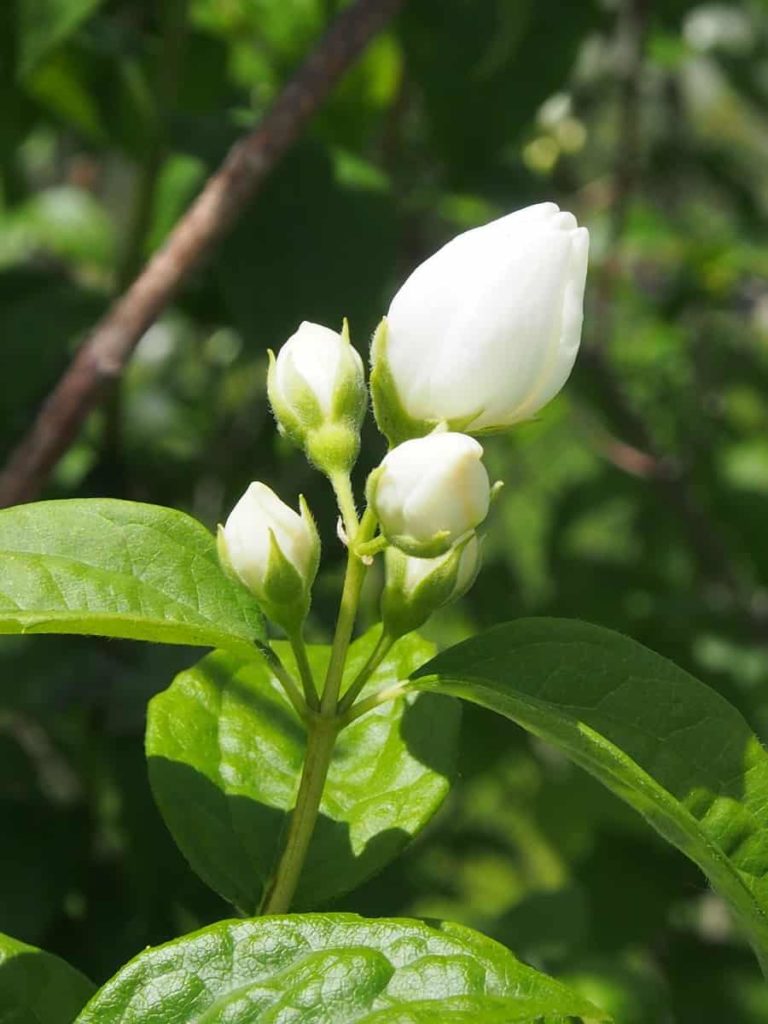
Jasmine leaves are turning black and falling off. Also little bumps on stem. Any suggestions.